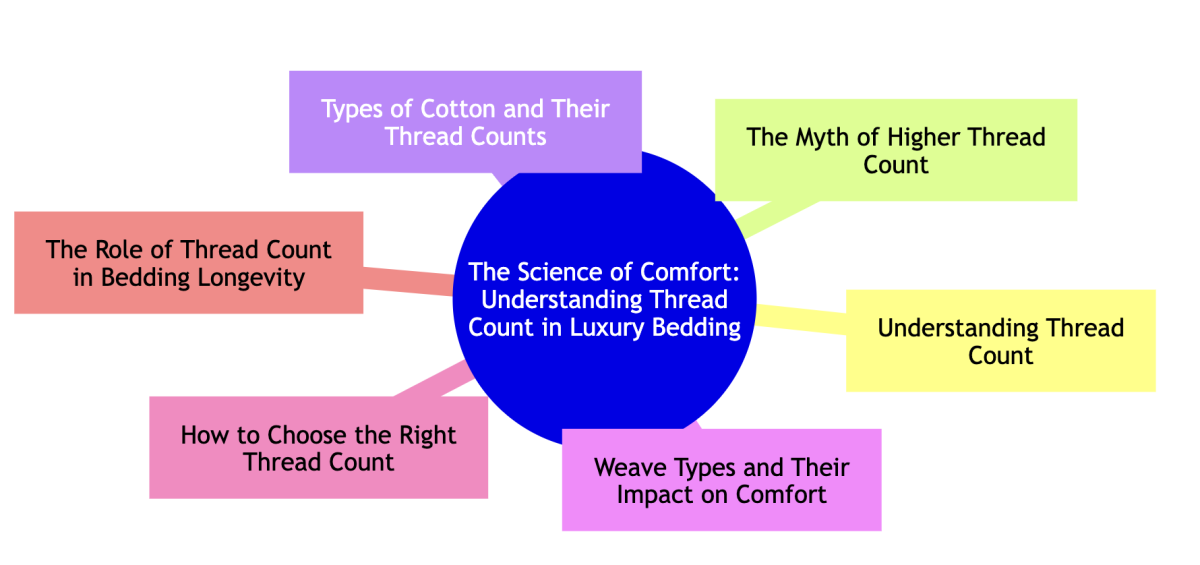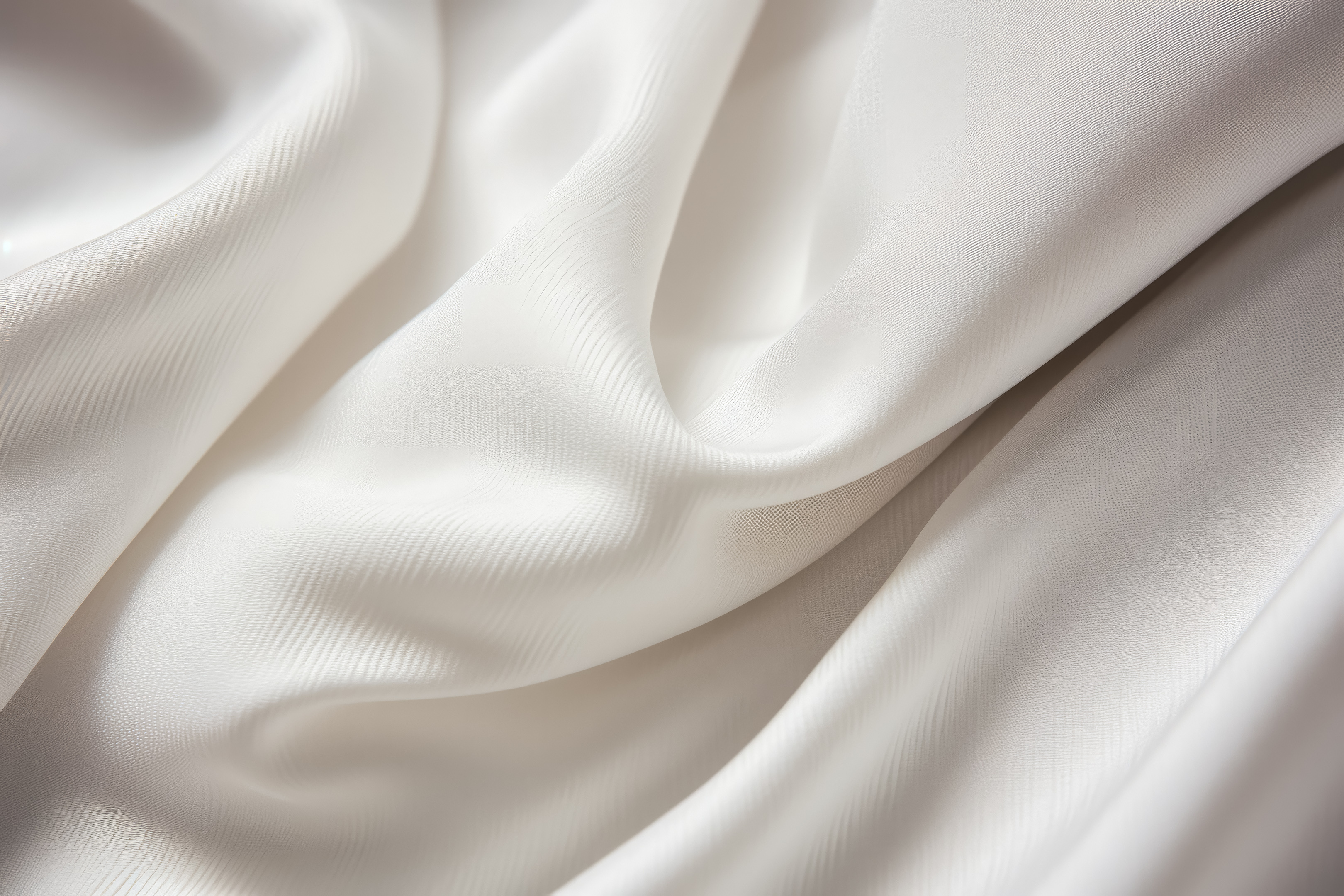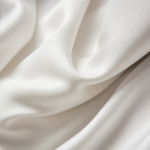When it comes to luxury bedding, one term often stands out: thread count. This number is frequently touted as the benchmark for comfort and quality. But what does it mean? In this article, we delve into the science behind thread count and its role in defining the luxury of your bedding.
And remember,- from luxury comforter sets to matching curtains, Latest Bedding has you "covered' in luxury bedding.
Key Takeaways
- Thread count is an important factor, but not the only one to consider when selecting luxury bedding.
- The ideal thread count varies based on personal preference, with ranges offering different benefits.
- The type of cotton and weave also significantly impact the feel and performance of bedding.
- Proper care and maintenance are crucial for extending the life of high-thread-count bedding.
- Latest Bedding offers a diverse collection of luxury bedding, providing options for every preference and ensuring top-notch quality and comfort.

Understanding Thread Count
Thread count refers to the number of threads woven into one square inch of fabric. It's a simple measure: the higher the count, the more threads per inch. But does a higher count always mean better bedding? Let's break it down.
|
Thread Count Range |
Characteristics |
|
200-300 |
Lighter, breathable, and often softer after multiple washes |
|
300-400 |
Balanced in durability and softness, popular for luxury bedding |
|
400-600 |
Denser, smoother feel, often with a sateen finish |
|
600+ |
Very tight weave can feel heavier, sometimes less breathable |
The Myth of Higher Thread Count
The belief that a higher thread count equals superior quality is widespread. However, this isn't always the case. The truth is, beyond a certain point, a higher thread count doesn't necessarily improve the feel or longevity of sheets. Extremely high thread counts can sometimes lead to stiffer, less breathable sheets.
Manufacturers often play with numbers, counting multi-ply threads as multiple individual threads. This inflates the thread count without actually enhancing the fabric's quality. It's crucial to look beyond the numbers and consider the fabric's feel, weave, and finish.
Types of Cotton and Their Thread Counts
Egyptian Cotton
Egyptian cotton is renowned for its long fibers, creating a smooth and luxurious feel. Typically, its thread count ranges from 300 to 500. This type of cotton is known for its durability and softness, enhancing with each wash.
Pima Cotton
Pima cotton, similar to Egyptian, is known for its long fibers, contributing to a soft, durable fabric. Its thread count usually falls between 200 and 300, offering a balance of comfort and breathability.
Standard Cotton
Standard cotton has shorter fibers, resulting in a more affordable but less luxurious option. Its thread count often ranges from 150 to 200, making it a practical choice for everyday use.
Silk
Silk, known for its smooth, luxurious texture, is a highly sought-after material in bedding. Unlike cotton, silk thread count is measured differently, often referred to as 'momme' weight. The ideal range for silk bedding is typically between 19 to 25 momme. Silk's natural protein fibers provide a soft, fluid feel, making it a premium choice for those seeking elegance and comfort. Its natural temperature-regulating properties also make it suitable for various climates.
Linen
Linen, made from the fibers of the flax plant, offers a distinctly different feel compared to cotton. It is valued for its natural, slightly textured appearance and exceptional breathability. Linen thread count is generally lower, often around 80 to 150, but its quality is high due to the strength and thickness of the flax fibers. Linen bedding is known for its durability, moisture-wicking properties, and ability to soften charmingly over time.

Weave Types and Their Impact on Comfort
The weave of a fabric significantly influences its feel and performance. Here's a look at common weaves in luxury bedding:
- Percale: A crisp, breathable weave with a matte finish. Ideal for hot sleepers.
- Sateen: Smooth, with a slight sheen. Offers a luxurious feel and drape.
- Twill: Diagonal rib pattern. Durable and less prone to wrinkling.
- Jersey: Knit fabric, stretchy and soft, resembling a T-shirt material.
Each weave offers a unique experience, affecting the bedding's breathability, durability, and overall feel. Continuing with the article:
How to Choose the Right Thread Count
Selecting the right thread count is about finding the perfect balance between comfort and durability. It's not just about picking the highest number you can find. Instead, consider your personal preferences and needs. Do you prefer a crisp, cool sheet, or are you inclined towards a softer, more luxurious feel? Here's a guide to help you make an informed choice:
- 200-300 Thread Count: Ideal for those who prefer a lighter sheet. These are breathable and get softer with each wash, making them perfect for warm climates.
- 300-400 Thread Count: This range is often considered the sweet spot for luxury bedding. Sheets in this thread count strike a balance between softness and durability, suitable for most preferences.
- 400-600 Thread Count: If you're looking for a denser, smoother feel, this range is ideal. Often featuring a sateen finish, these sheets offer a more luxurious experience.
- 600+ Thread Count: These sheets are known for their very tight weave, resulting in a heavier feel. While they offer a high degree of luxury, they might be less breathable, making them better suited for cooler climates or those who prefer a weightier sheet.
Remember, the right thread count for you might not be the highest one. It's about what feels best against your skin and suits your sleeping habits.
The Role of Thread Count in Bedding Longevity
Thread count also plays a crucial role in determining how long your bedding will last. Higher thread count sheets are often more durable, as the tightly woven threads resist wear and tear better than looser weaves. However, this doesn't mean that sheets with a lower thread count are necessarily inferior. With proper care, even sheets with a moderate thread count can last for years.
Here are some tips to extend the life of your luxury bedding:
- Wash Gently: Use a mild detergent and avoid harsh chemicals. Washing your sheets in cold water on a gentle cycle is usually the best approach.
- Avoid Overloading the Washer: This prevents excessive tugging and pulling, which can strain the fibers.
- Line Dry When Possible: While tumble drying on a low setting is generally safe, line drying helps preserve the fabric's integrity and softness.
- Iron Carefully: If you prefer a crisp look, iron your sheets on a low setting. High heat can damage the fibers over time.
By understanding the role of thread count in bedding longevity and following these care tips, you can ensure that your luxury sheets remain a comforting part of your sleep experience for years to come.
Conclusion: Balancing Thread Count and Quality
While thread count is a valuable indicator of sheet quality, it's not the sole factor to consider when choosing luxury bedding. The type of cotton, weave, and even the care you put into maintaining your sheets all play a pivotal role in the overall experience. Remember, the best bedding is the one that suits your personal comfort preferences and enhances your sleep quality.
As we wrap up our exploration of luxury bedding and thread count, keep in mind the online catalog of Latest Bedding, a standout provider in the realm of luxurious sleep experiences. Latest Bedding offers an exceptional collection of luxury bedding that caters to a variety of tastes and preferences. Whether you're looking for the crisp feel of a lower thread count or the sumptuous embrace of a higher count, Latest Bedding has something to suit your needs.
Their commitment to quality and variety ensures that you can find the perfect bedding to transform your bedroom into a haven of comfort and style. With Latest Bedding, you're not just investing in sheets; you're elevating your entire sleep experience.




























